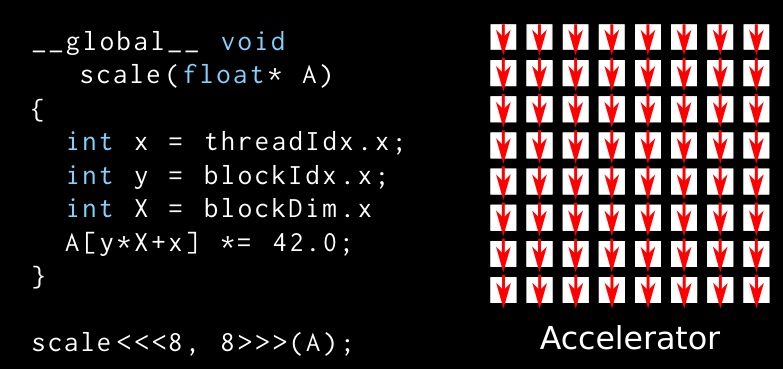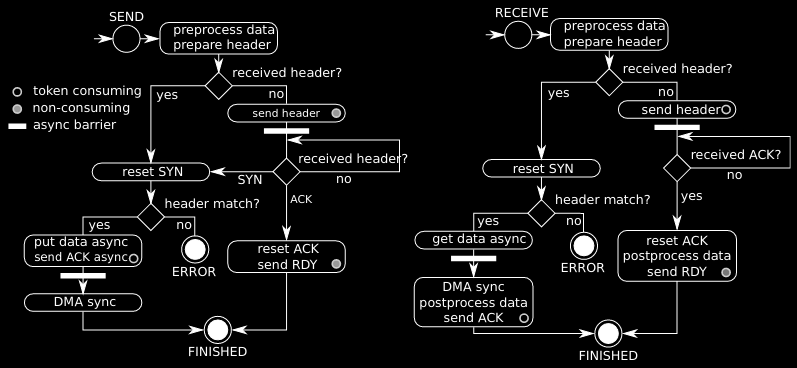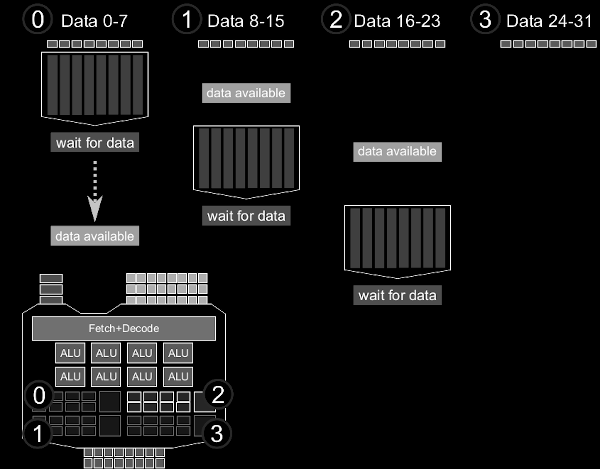
My Name is Sebastian Schaetz. My background is in computer science, I work on software in the data and hardware manufacturing space. I'm also experienced in making signal processing and numerical codes fast using multi- and many-core architectures. I have fun stories about fixing software bugs in clean-rooms.
I currently work as a Software Engineerg on some exciting hardware and software that interfaces with the real world.
Previously I worked at Butterfly Network where they make hand-held Ultrasound devices. To get an idea about some of my work there check out one of my blog posts on the Engineering blog there: Ultrasound Beamforming on Mobile Devices: from Prototype to Product.
I have a few projects on GitHub including an awesome-list where I am collecting great hardware test resources and Aura, header-only C++ library for accelerator development that works with Metal, OpenCL and CUDA.
I also gave a couple of talks in my time, particularly while I was working on modern C++ and accelerators.
The Future of Accelerator Programming in C++ #
From newest to oldest, in 2014 I gave a talk at the C++ Now conference in Aspen, Colorado that gives an overview over accelerator programming libraries (from back then).

I compare OpenCL, CUDA, C++ AMP, OpenACC, RenderScript, Thrust, Bolst, Vexcl, Boost.Compute, ViennaCL, MTL4, NT2, Arrayfire, and how they compare in terms of developer productivity, generality and performance. There might even be a recording of this talk on YouTube if you look but I think the slides from back then should suffice. You can find them here.
Mastering the Cell Broadband Engine architecture through a Boost based parallel communication library #
Another talk I gave in 2011 was about Cell-MPI, a C++ library that implements the standardized Message Passing Interface (MPI) on the Cell microprocessor.

The Cell was an eccentric processor that was at the heart of the Playstation 3 game console. It combined a PowerPC core with 8 custom stream processing cores with wide vector units, limited memory connected with a high-throughput ring-bus. I implemented a way for any 2 stream processing cores to communicate safely which was a lot of fun. It was not the most efficient implementation but we were able to implement most MPI message types. This talk is also somewhere on YouTube - but I'd recommend you just check out the slides here.
General-Purpose Computation on Graphics Hardware #
And finally I also gave a lecture with a tutorial/lab session on General-Purpose Computation on Graphics Hardware (GPGPU) in 2010. This is a two hour talk I prepared for graduate students with no background in GPGPU. Over the years

I've introduced a few dozens of people to GPGPU and taught them the basics. But this talk is the most thorough and the lab assignment with solutions teach the concepts well. I'm making the material for the course available but please be aware that this material is quite old but I think the general concepts and ideas still apply. Maybe the material can serve as the foundation for an updates workshop one day.
- the slides explain the difference between CPU and GPU, and what makes GPUs suitable architectures for massive-parallel problems
- the lab allows students to use what they are learned by implementing a basic numerical integration code on the GPU
- the lab comes with starting source code as a harness to implement the solution
- and for the numerical integration lab there is also a solution available